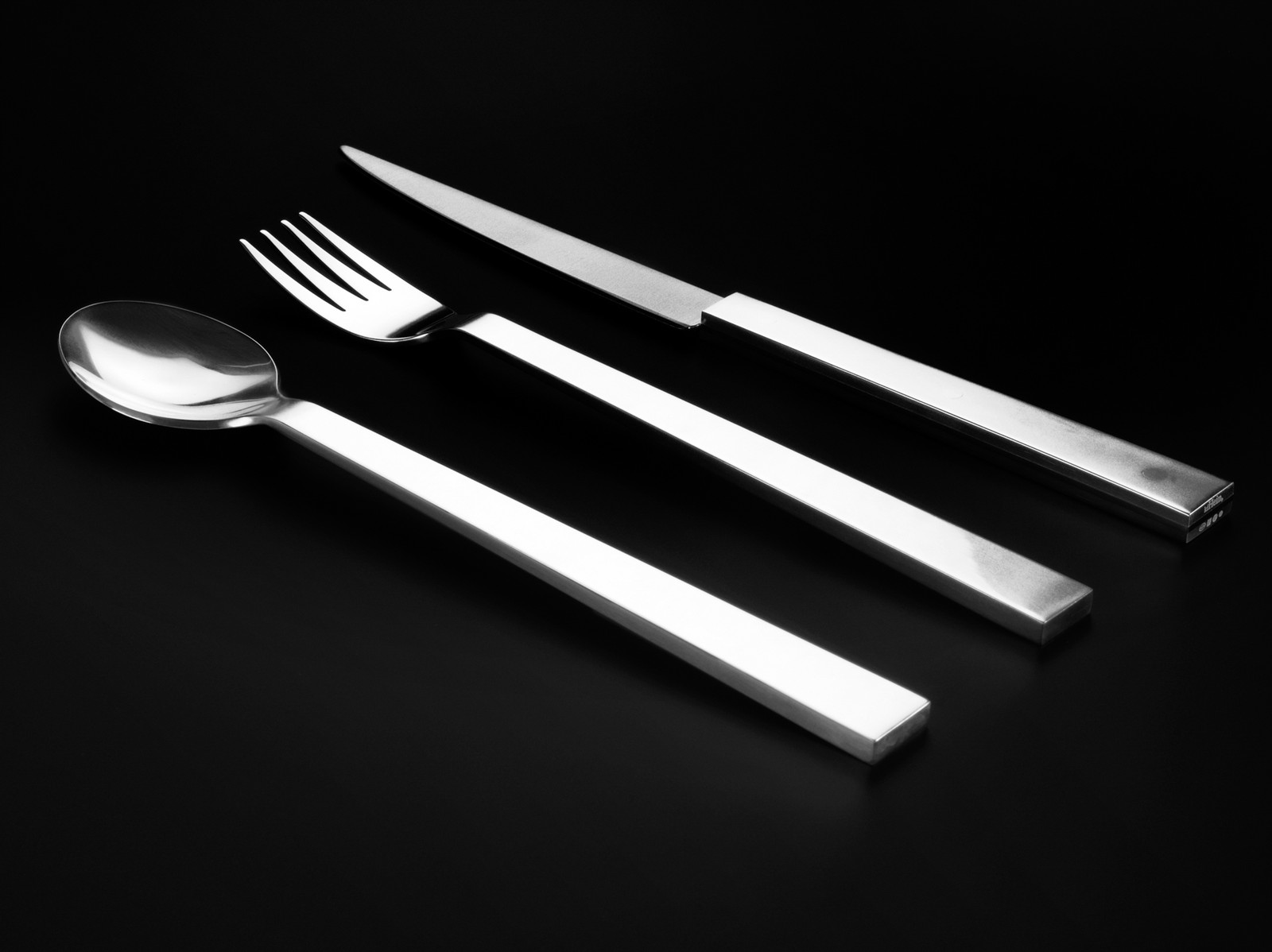The silver ratio

Tags design
Disciplines gold and silver
The silver ratio
In Western culture knife, fork and spoon have long been inextricably linked. However, each part of our cutlery has a very different origin, history, form and application. The knife originated first, and initially functioned as a universal tool and weapon. The spoon, originally from wood, dates back to the Middle Ages. For centuries the fork was only used to keep a hunk of meat in place while cutting. Only in the eighteenth century it became a permanent part of the cutlery.
This design succeeds in engaging the shapes of the different parts of the cutlery with each other. The starting point was the Plastic Number, a pure system of measurements developed by Benedictine monk Dom Hans van der Laan in the 50s as a three-dimensional variation on the golden ratio. From the smallest to the largest measurement, all the dimensions within the design are related to each other in ratios which are perceived as perfectly correct. Because of this the seven-piece cutlery – consisting of both a large and small knife, spoon and fork and a coffee spoon – form a harmonious unity.
The starting point of the cutlery was a hard-rolled, first grade silver plate with a thickness of five millimeters. A waterjet is used to cut out the contours of the cutlery. A sustainable production method, since the leftover silver (“scrap”) can be melted down and reused. The individual parts of the cutlery are then milled in a tapered cut across the entire length, then forged into the proper shape. Finally the silver handles were riveted to the blades in a traditional fashion. The blades are made out of stainless steel for increased strength.
Design: Willem Noyons
Execution: André van Loon
Client: KF Hein Foundation
Photography: Petra and Erik Hesmerg